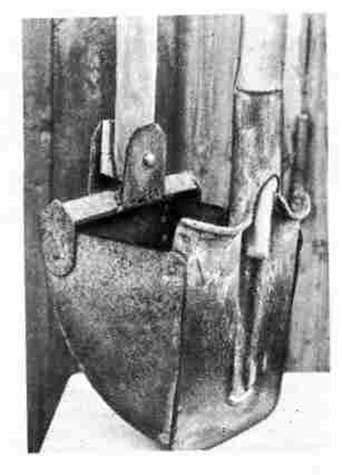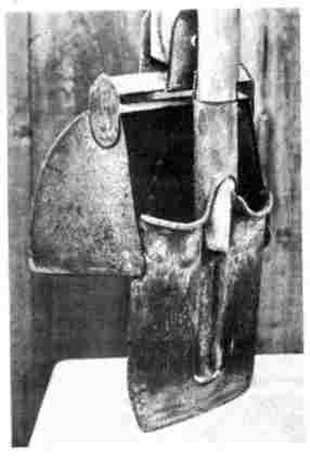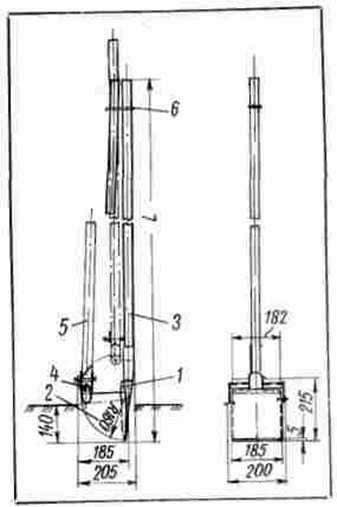
In terms of productivity, the proposed hand scoop for extracting soil from rectangular wells, wells, sediment from wells, etc., of course, is inferior to mechanized, but where mechanisms can not be used, my device has several advantages.

They can extract soil from narrow pits, which you can not do with a shovel, expanding the “front”. These are pits for different pillars and pits with walls at different angles, if the ground does not fall. A scoop can be digged with minimal clearance from the pole, which makes it possible to secure it securely in compacted soil. The device allows you to extract sediment from clean wells from a depth of several meters without pumping water, also thanks to the minimum gap between the shovel and scoop.
The device does not leave oil stains, since the joints can not be lubricated.

I made a scoop for cleaning the well in the garden. Its depth is about 4 m, diameter of 1 m. Prior to this depth, cleaned the well, without pumping water. The height of the harvested soil was about 1 m (this was due to inaccurate installation of the casing rings). Cherpak cleaned their wells and neighbors in the collective garden.
He dug them with pits 2.1 meters deep, section 400X400 mm for concrete pillars under a garden house. The ground had to be loosened, then removed, since the scoop did not crash into compacted soil, mixed with small stones.

The tool is a shovel 1 with an articulated scoop 2. The scoop is mounted on the stem 3, the scoop 2 is connected through a plug 4 with a handle 5. On the upper part of the shank 3 is fastened a yoke 6. Through the second half of the clamp, the shank freely moves 5. The length 1 needs to be selected depending on the required pit depth, borehole, or well, taking into account the part projecting above the surface. The length will limit the stability of the cuttings and the total weight of the scoop.
Before dipping, the scoop 2 is opened slightly by moving the handle 5 upwards and immersed in the ground. At the moment of pressing into the ground, the force must be applied only to the cuttings 3. The depth of immersion depends on the looseness of the soil. At the possible depth, the scoop is closed by moving the handle downward. Remove the tool to the surface behind the shank 3 and free it from the ground.
Shovel 1 is modified from a conventional shovel by bending the sides (it is possible to weld them) and cutting off the radiused lower part, which allows you to dig a flat bottom of the pit.
Bucket made of carbon steel, 1 mm thick. The cutting edge is reinforced with an additional plate. All assembled on rivets (welding possible).
Cuttings can be made with a reduction of the section to the top. The rest – from the attached sketch and photographs. The weight of the scoop without cuttings is approximately 1.8 kg.
Пчелы на платформе.. Акарапидоз пчел.
Useful tips for the amateur beekeeper